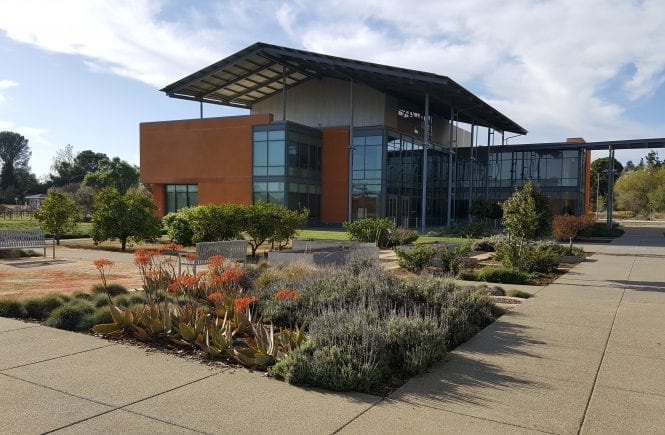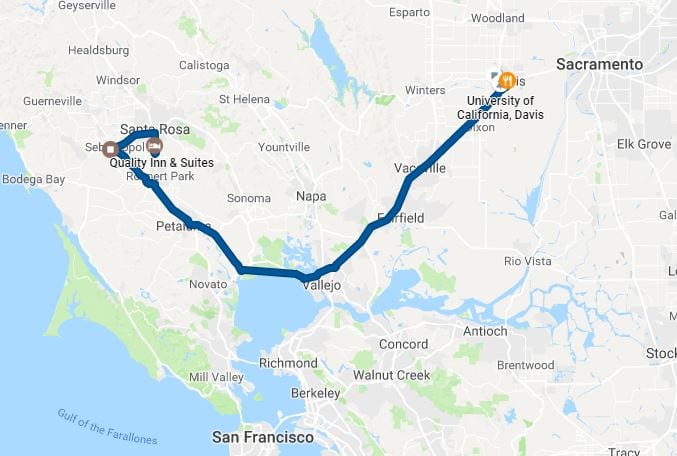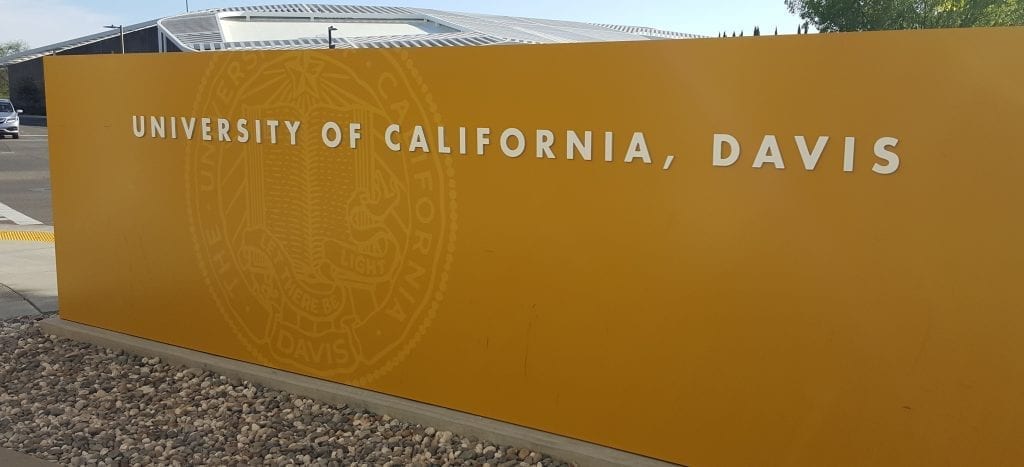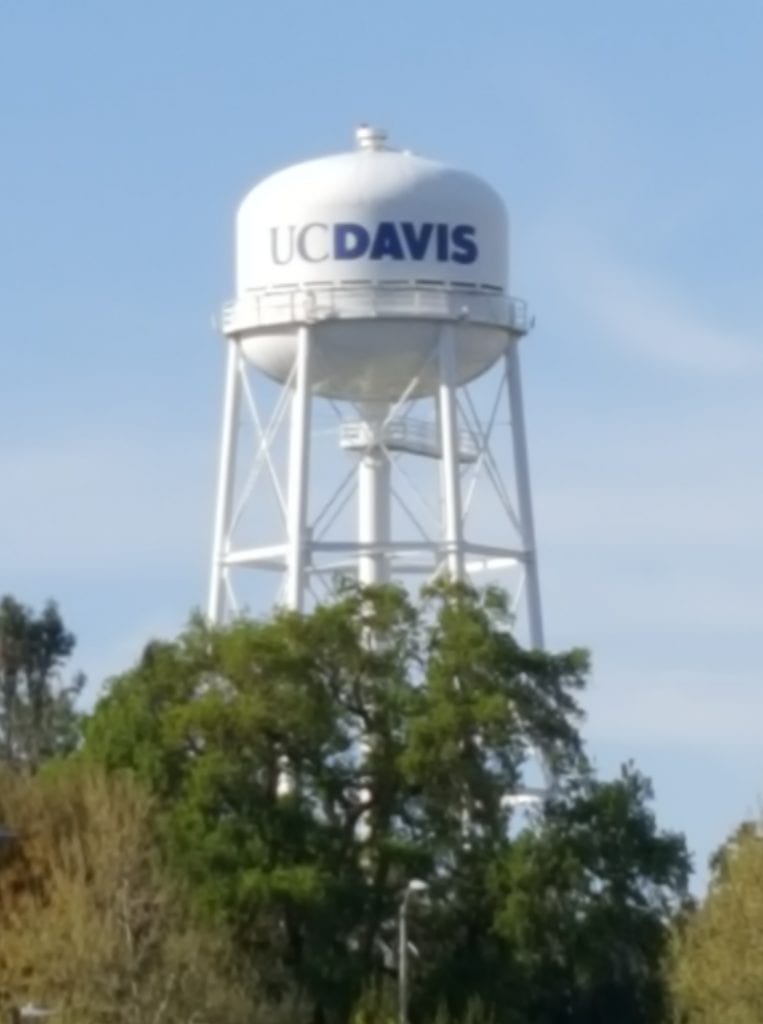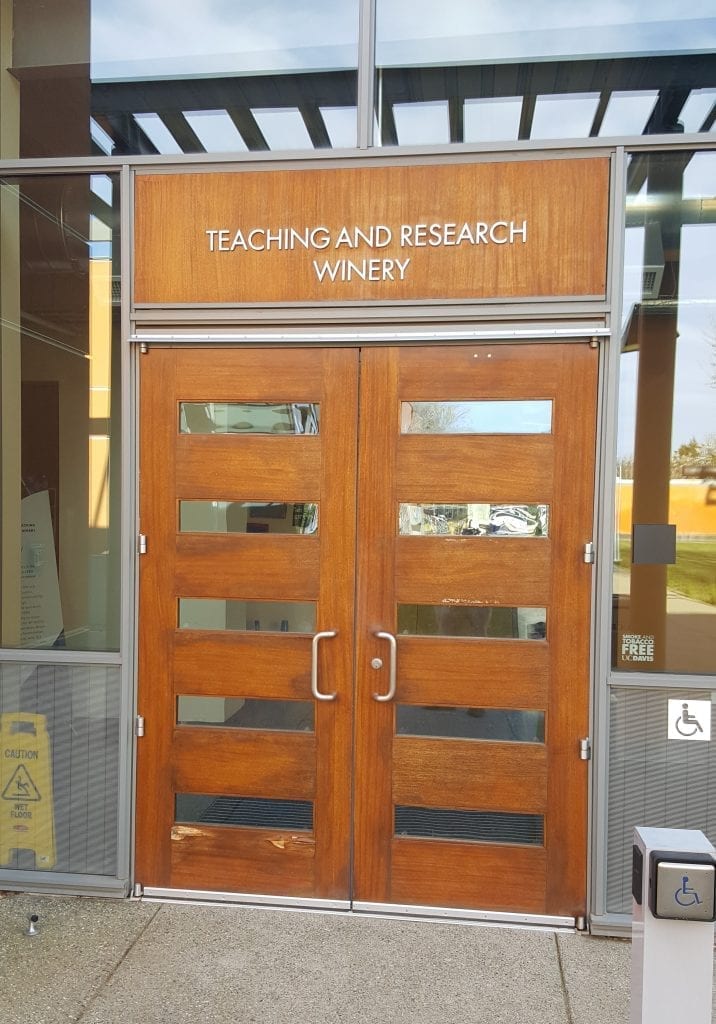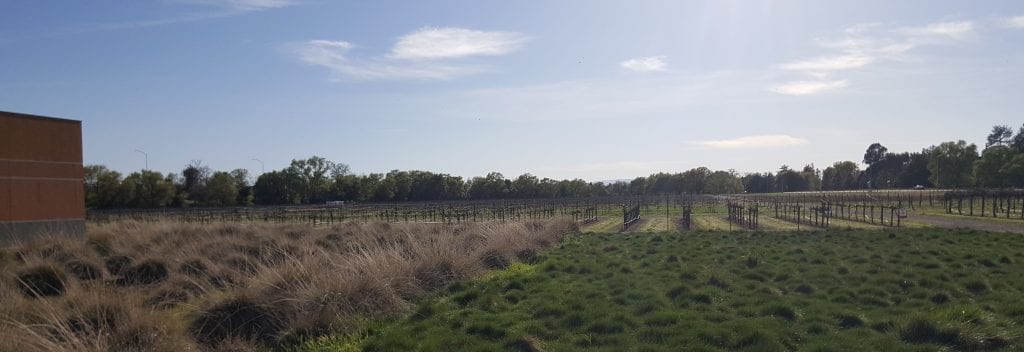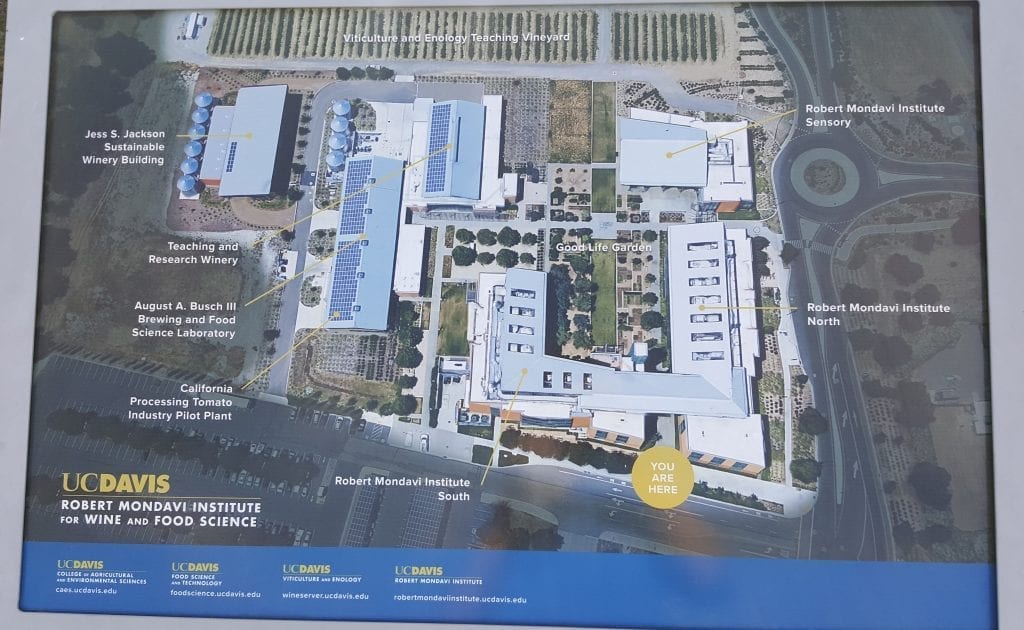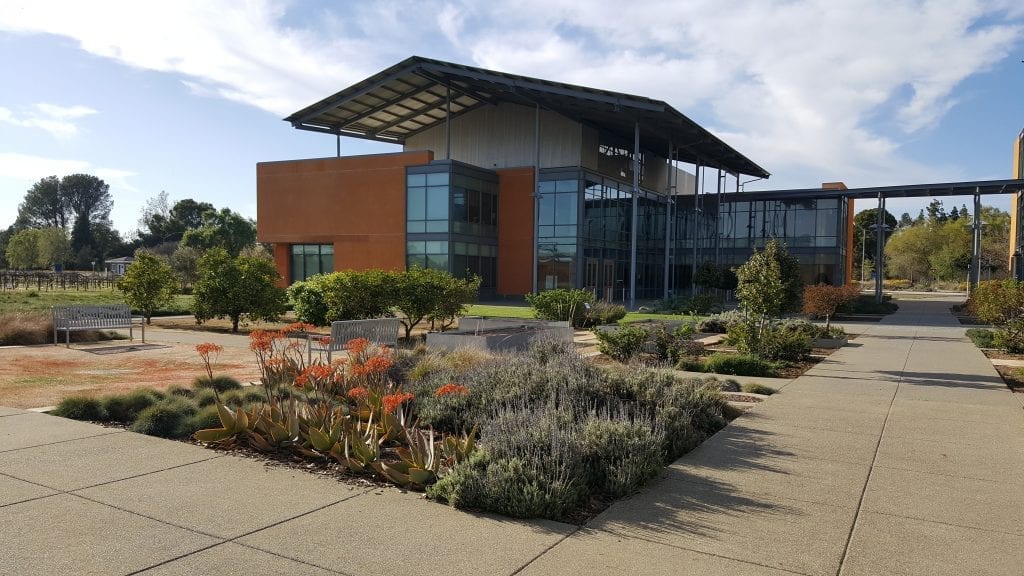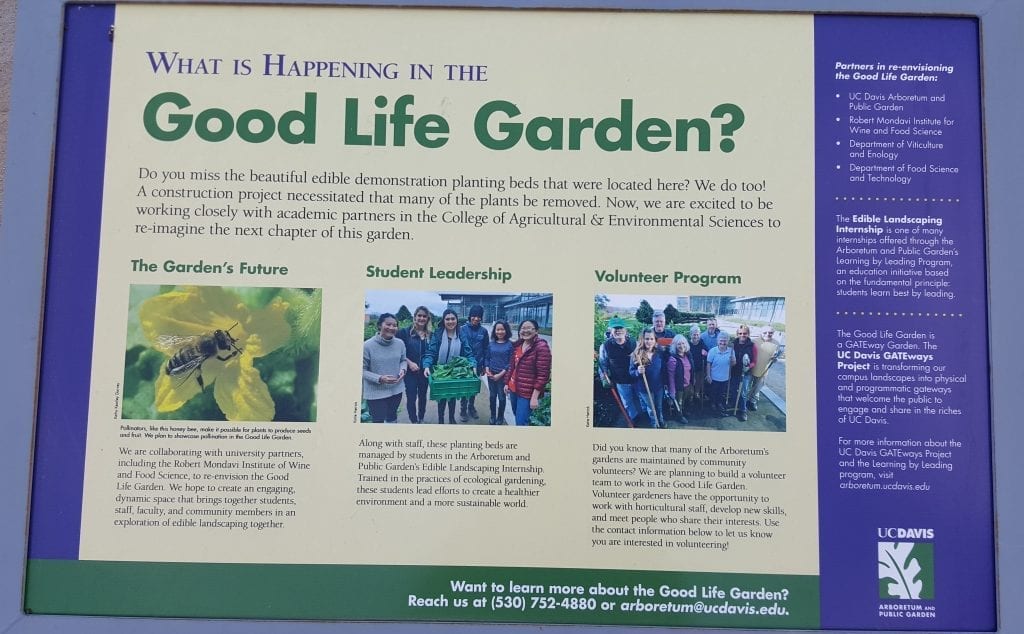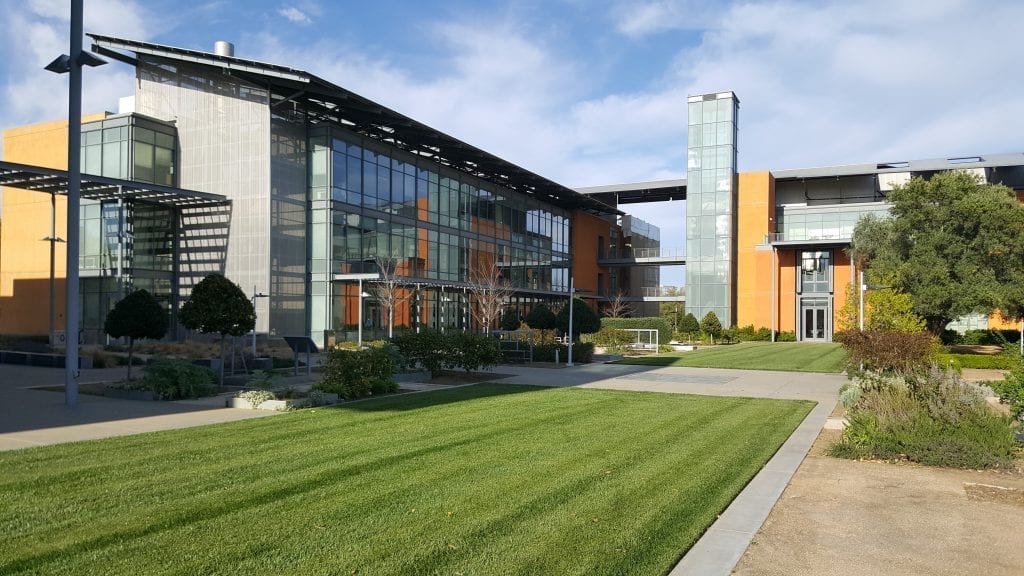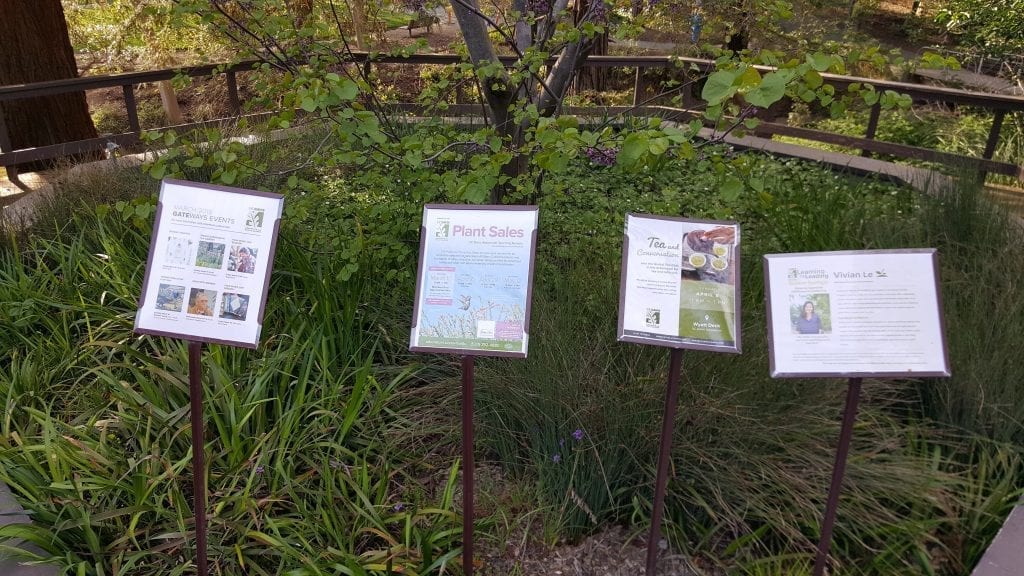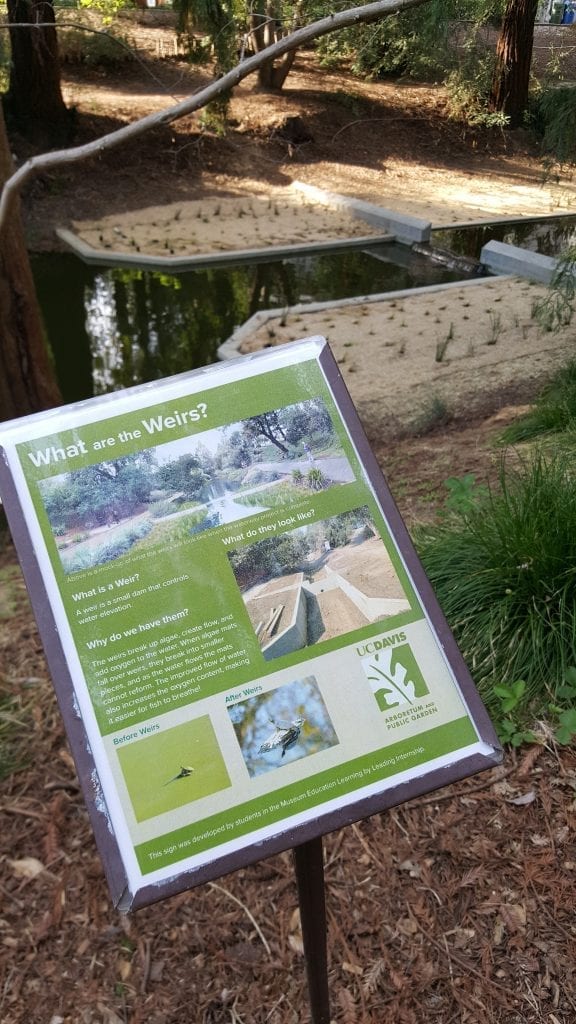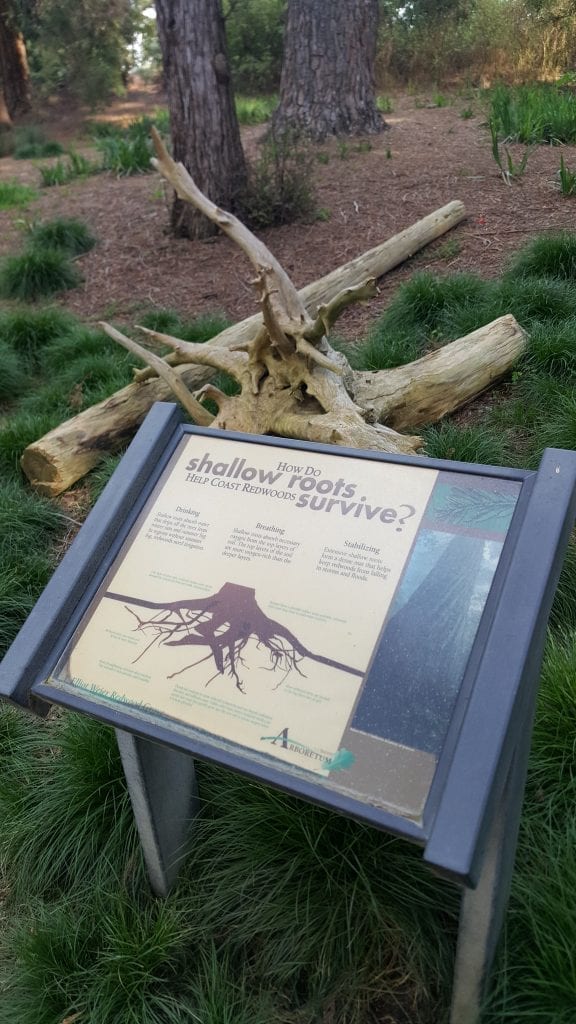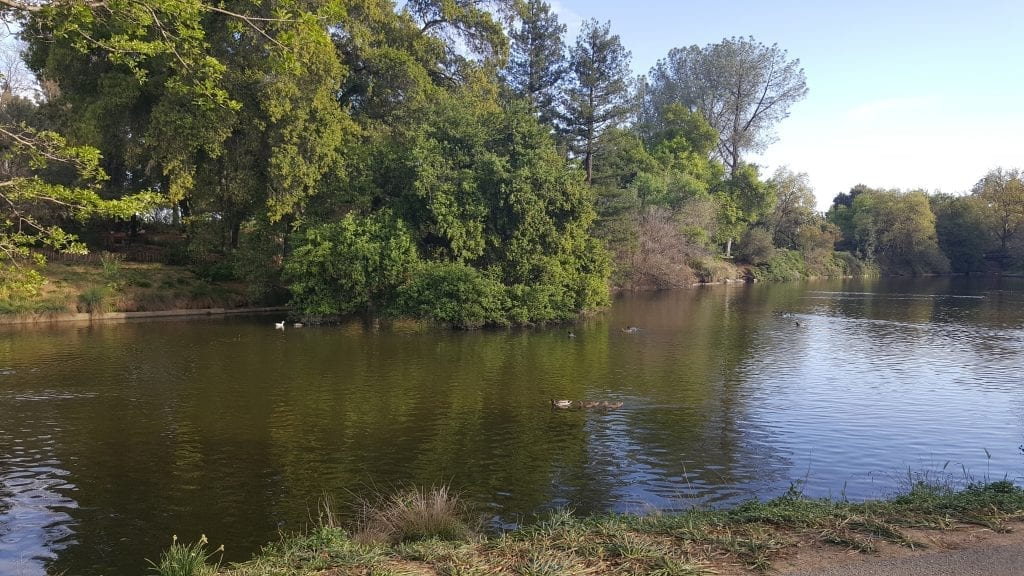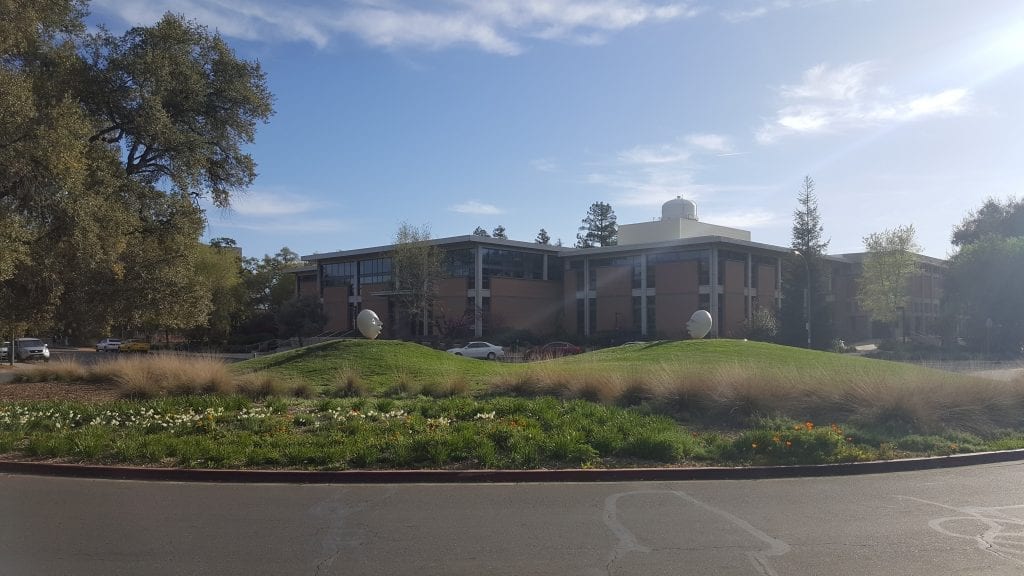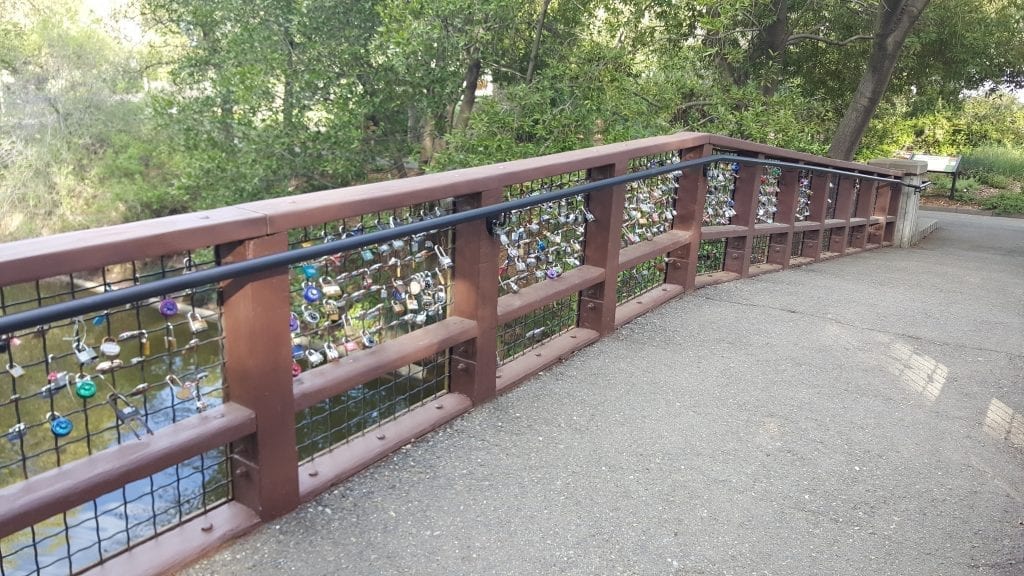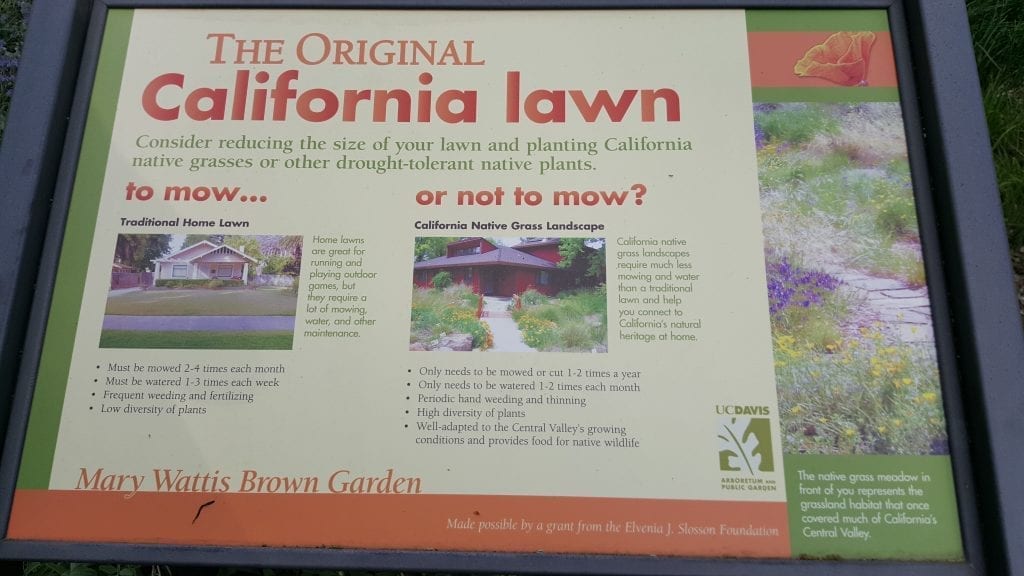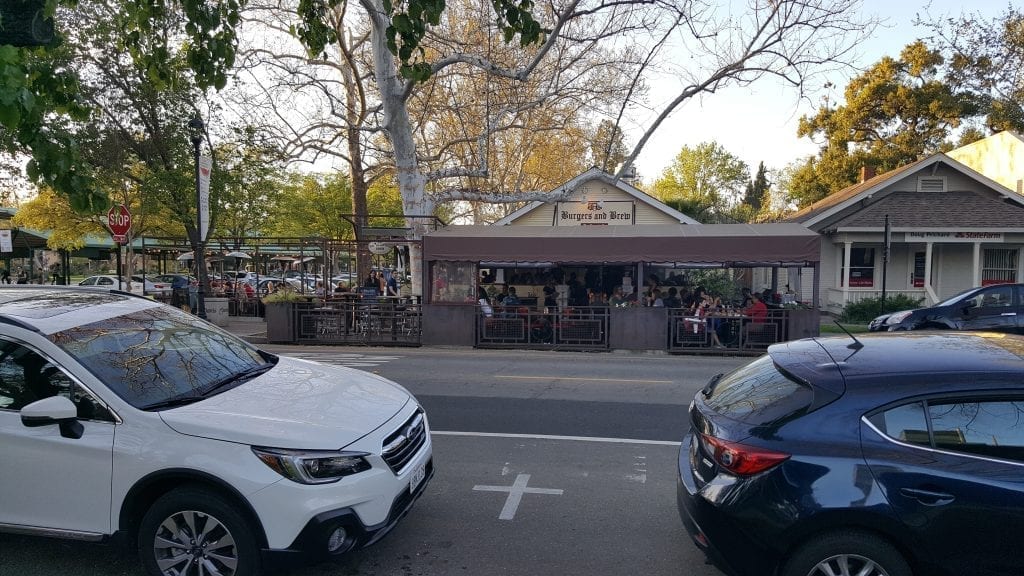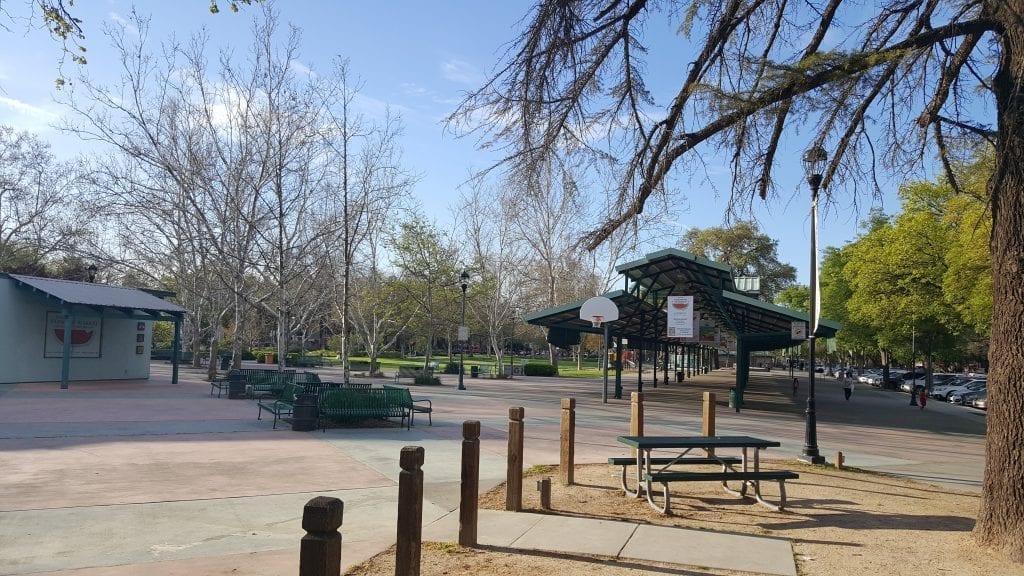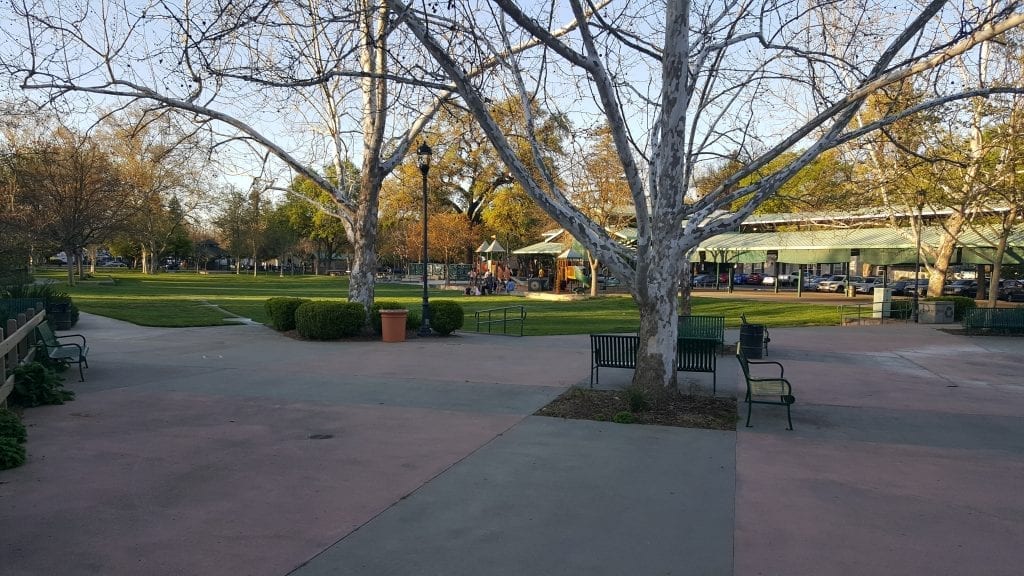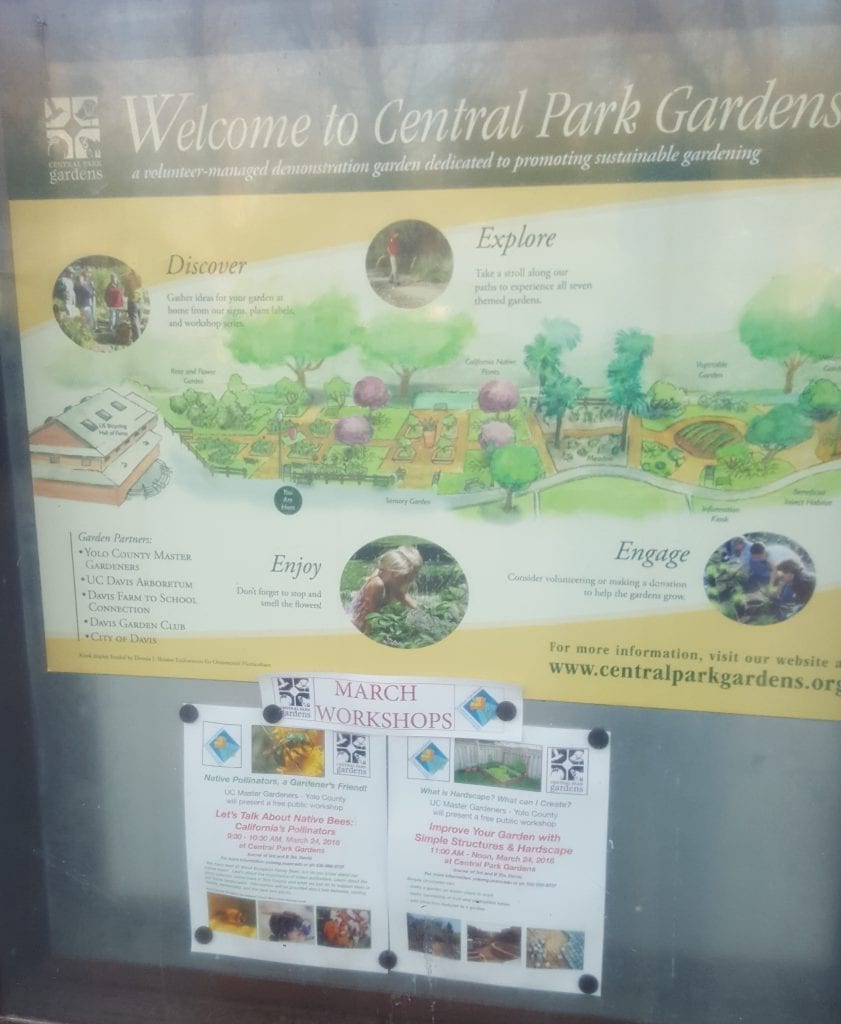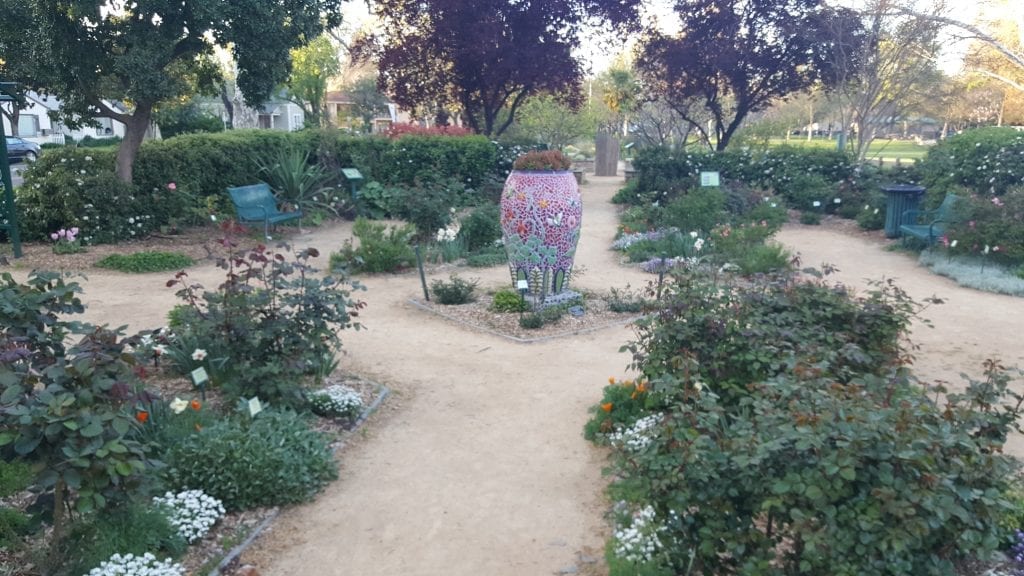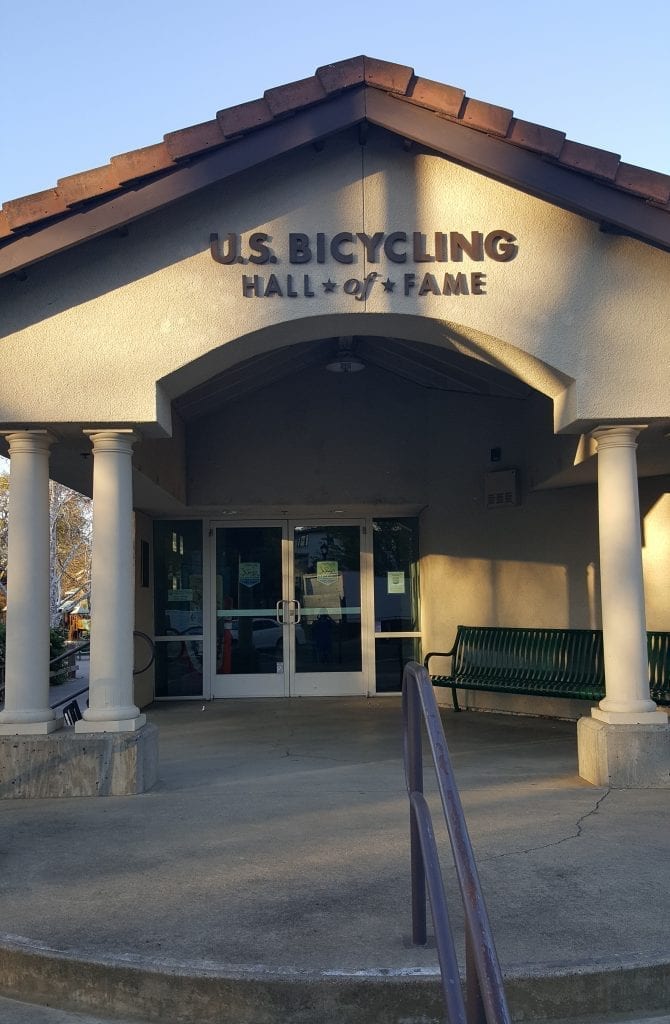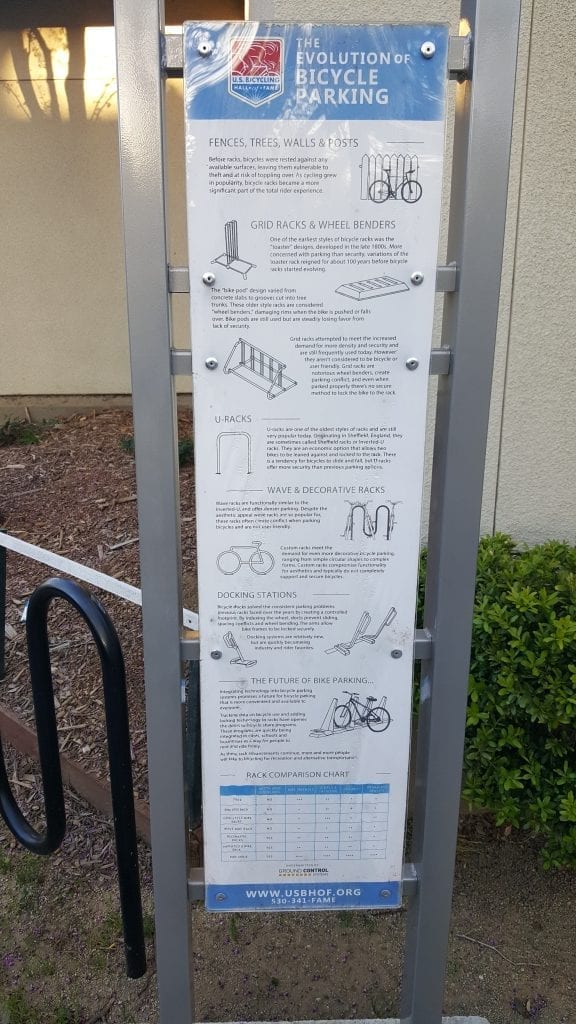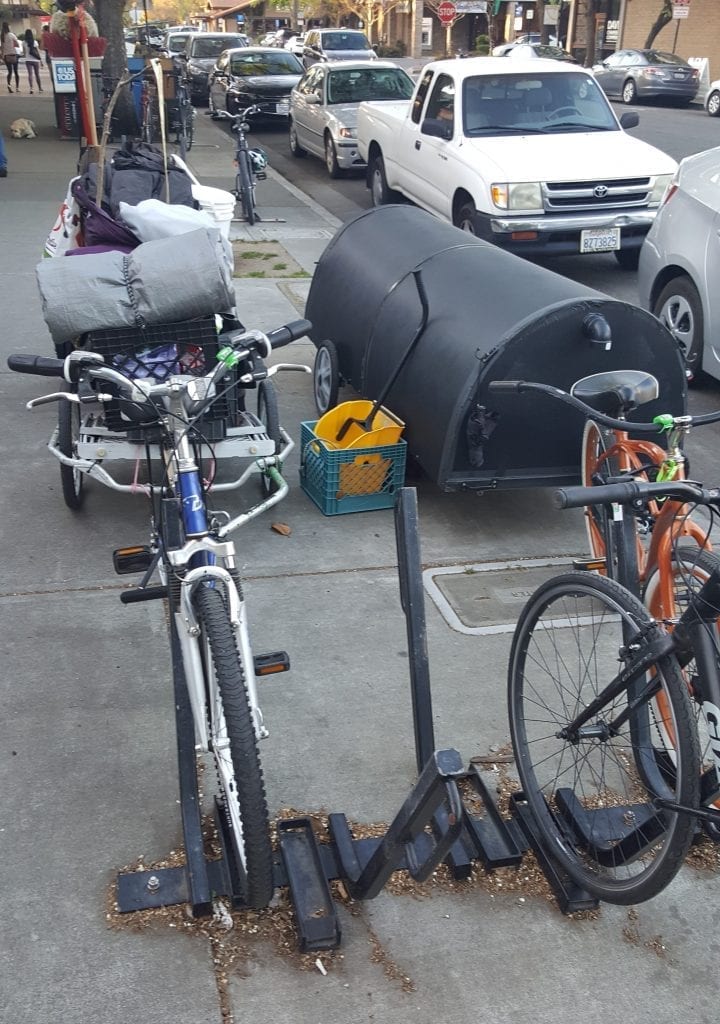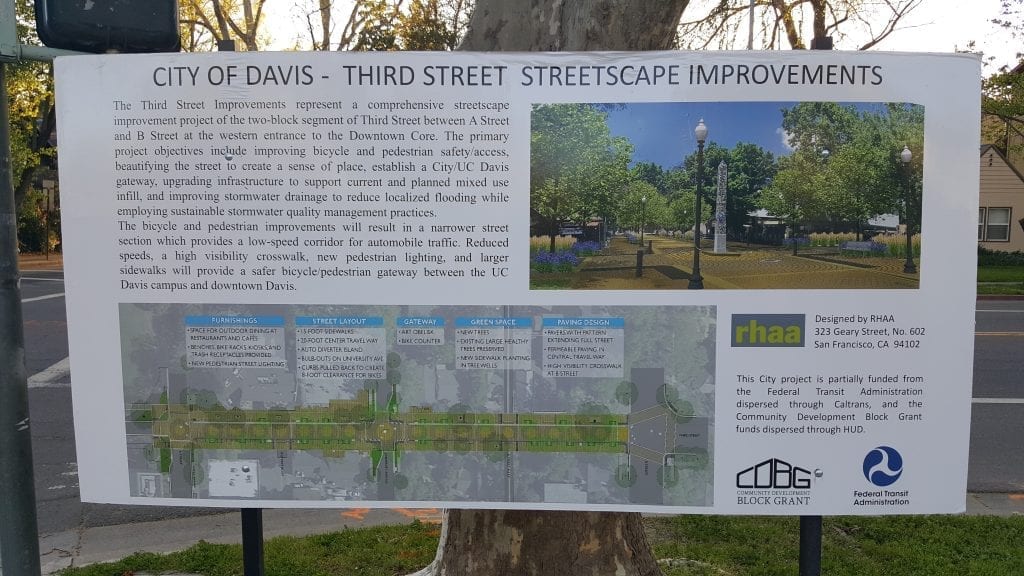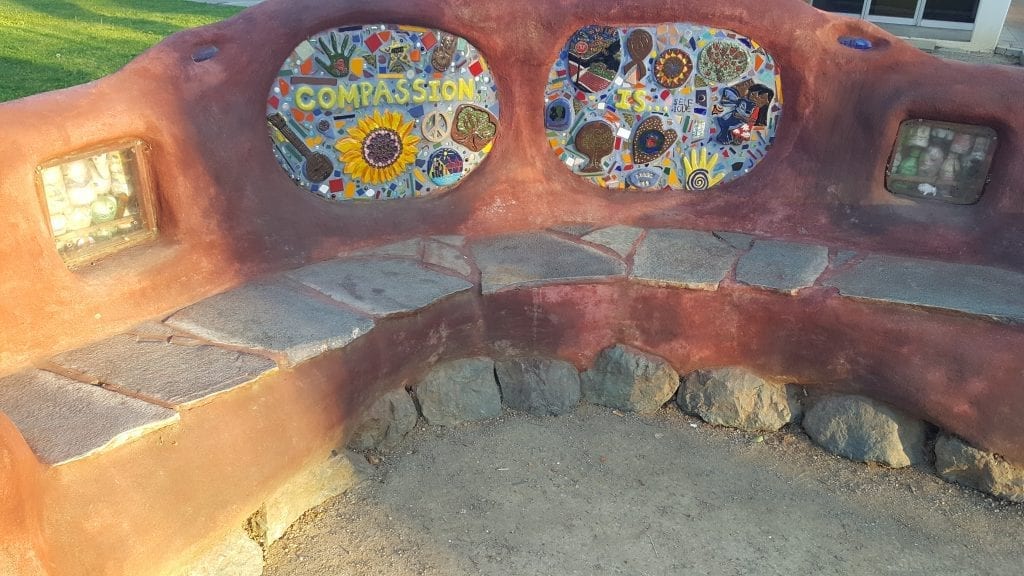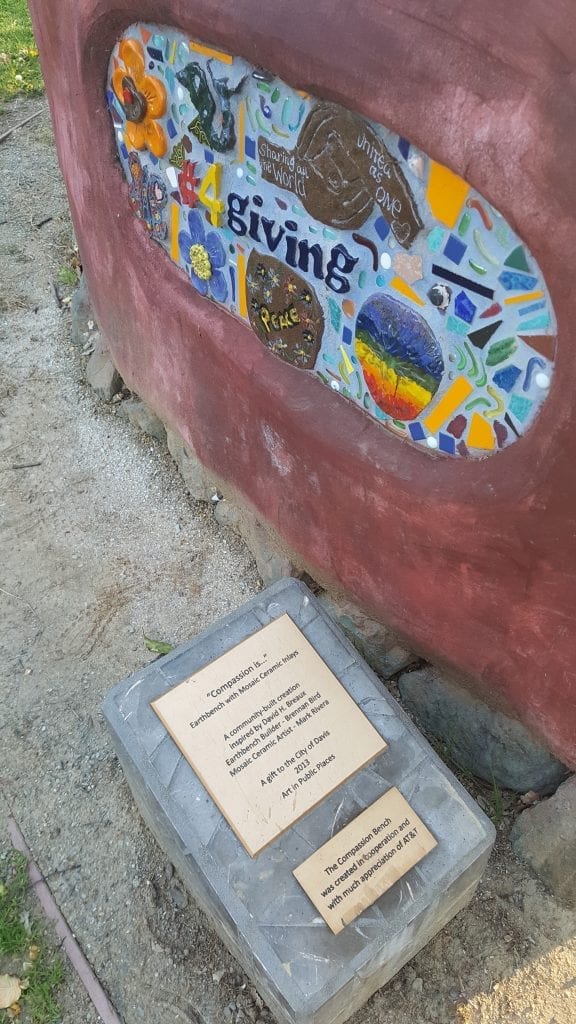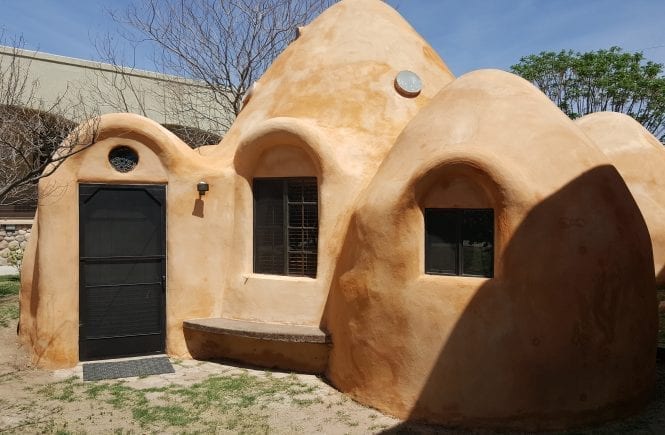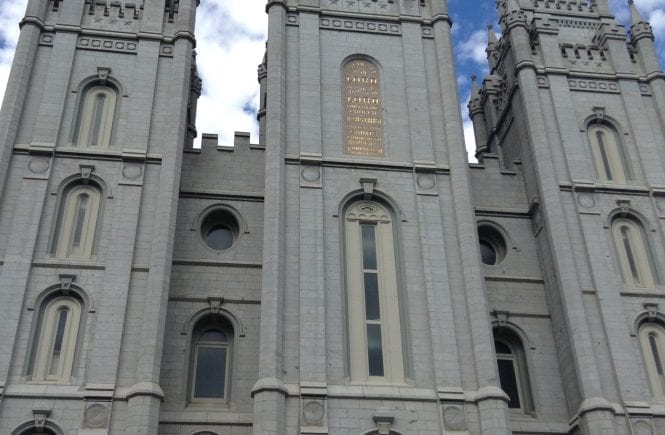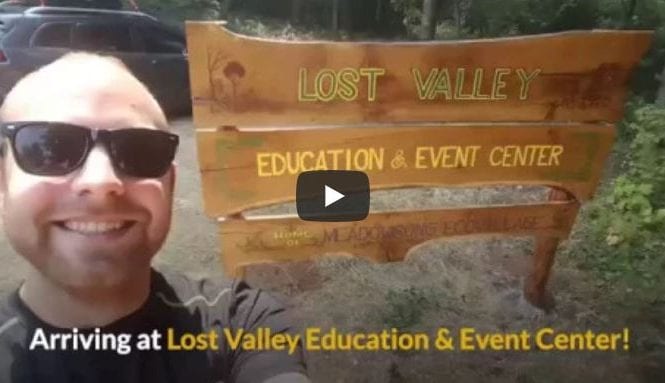University of California, Davis & Town Trip – Summary:
- Who: N/A
- What: Toured the campus gardens at UC Davis; Went to downtown Davis for dinner and walked around the common areas
- When: Thursday, March 29
- Where: Davis, CA
Quick Resources:
- University of California Davis Webpage
- UCDavis Arboretum and Public Garden Webpage
- UCDavis Arboretum and Public Garden Facebook Page
- Davis Farmers Market Webpage
- Davis Central Park Gardens Webpage
- City of Davis – Third Street Improvements Webpage
My Route:
Planning my Eco-Inspired Road Trip Blog Post
My Travel Story:
After the tour of Muir Commons Community, I went to the University of California, Davis to check out some of its on-campus sustainability features – like the arboretum, gardens, and onsite agricultural programs.
UC Davis not only has an onsite brewery and academic program, but also a LEED Platinum Teaching and Research Winery and a teaching vineyard onsite!
Here’s a view of the campus vineyard that you drive by on the way into campus, and it backs right up to the educational buildings and research centers.
This is a map of the of the Robert Mondavi Institute for Wine and Food Science Complex, which included the recently added Good Life Garden.
Featured next to courtyard of the Robert Mondavi Institute for Wine and Food Science is the UC Davis Good Life Garden, an educational hub for edible landscape projects campus wide.
“In support of this passion, the UC Davis Arboretum and Public Garden is transforming one of our campus’s most high-profile public gardens — the Good Life Garden — to a place where we can share the science and social justice issues around food, food production and food safety.
Our vision for the garden involves teams of students participating in the Arboretum and Public Garden’s popular Learning by Leading™ program, stewarding the garden and elevating its role as an educational hub for edible landscape projects campus wide.” – UCDavis Webpage
Here is the Good Life Garden while I was exploring campus, while its a great effort and supports a good cause — I thought it was going to be bigger, considering the University’s funding and aim towards sustainability.
This plaque provides an overview of the Good Life Garden, picking up from the most recent building construction project that resulted in sections of the garden being removed. (This answered my size expectations for the garden.)
This rendered image shows what the garden was initially designed to look like, prior to the recent building construction project. Fortunately, the garden project is still going strong and the university is calling for help on the redesign, and continuing their educational and food production mission for the students.

A view of the most recent building construction project while standing in the main Good Life Garden growing area.
Wandering a little further into campus took me to the heart of the UC Davis Arboretum and Public Gardens. This arboretum is unique as it features 17 different gardens and collections from environments across the world, ranging from Mediterranean to East Asian to Australian. There’s even a “Locks of Love” bridge!
“The UC Davis GATEways Project (Gardens, Arts, and The Environment) is a master planning framework for the Arboretum & Public Garden that envisions the campus landscape as a portal into the campus, to welcome visitors and showcase the creative work and spirit of inquiry at UC Davis.
With the GATEways Project, the Arboretum & Public Garden will continue its work as a national leader in the public garden field, but it will also adopt a new mission: to inform visitors about the important ideas and complex issues UC Davis scientists and scholars are tackling. We are working with campus and community partners to develop a multi-layered learning experience that will use teaching landscapes, public arts, exhibits, digital technologies, and interactions with students to engage and inspire visitors.” – UCDavis Webpage
These were some signs highlighting upcoming musical events, nursery plant sales, the local tea club meeting in the arboretum, and a special student highlight.
This is the path into the Redwood Forest exhibit, which ran alongside a waterway that cut through university and all of the campus gardens. These paths are dotted with educational signs and specific ecological examples, but also served as jogging trails for the students and local community.
Here is a specific example of one of the educational exhibits and signage. Its a man-made dam called a “weir” which controls the water level to help break up algae, create flow, and oxidize the water.
This is another educational exhibit in the Redwood forest garden – a part of a Redwood root system. The sign explains that their shallow root system helps these large trees drink, breath, and stabilize themselves better.
Here’s a view of the central pond, and behind me was a large lawn where dozens of people were studying or having picnics on the grassy slope.
Not only are the gardens well maintained, but so were the campus grounds which included various sculptures and statues representing values of the school. (I think this was overcoming communication issues?)
This was the university’s love lock bridge, similar to the Pont des Arts bridge in Paris! (Unfortunately, the Parisian bridge had it’s fencing removed in recent years because it couldn’t withstand the weight of so many locks.)
This was a sign I came across in the Californian native plant garden, and this is how I think lawns should look like – as functional, food producing, water saving, pollinator attracting, wildlife promoting gardens.
(How white picket fences and lawns are social constructs of society – Prezi Presentation)
For dinner, I ended up eating in the heart of Davis, which is where the community has a farmers’ market pavilion, Central Park Garden, the U.S. Bicycling Hall of Fame, strawbale/recycled trash cob-plastered benches, and was also working on converting a two-block street through a streetscaping project.
This is a picture of Burgers and Brews, where I ate that night in downtown Davis, which put me right next to the farmer’s market pavilion and central gardens.
Here’s a view of the central park hub of downtown Davis, with public seating, basketball hoops, and the large covered pavilion for the town’s farmers market.
Another angle of Davis’s central park and farmers market pavilion, and a kid’s playground off in the distance.
This is the sign for Davis’s Central Park Gardens, a volunteer-managed demonstration garden promoting sustainable gardening for the area, also listing seasonal workshops for the public.
A view of the Central Park Gardens from inside!
Davis is also the home to the U.S. Bicycling Hall of Fame, which was closed at the time I passed by.
One of the exterior signs highlights the evolution of bicycle parking and locking stations.
Davis is also a bike-friendly community, but I couldn’t tell if these cyclists with their trailers where long-distance travelers or mobile homeless.
Across from the central park, opposite of the farmers market pavilion was a city funded streetscape construction project.
“The primary project objectives include improving bicycle and pedestrian safety/access, beautifying the street to create a sense of place, establish a City/UC Davis gateway, upgrading infrastructure to support current and planned mixed use infill, and improving stormwater drainage to reduce localized flooding while employing sustainable stormwater quality management practices.” – City of Davis Webpage
Caddy-corner to the restaurant was an upcycled bus bench, made from local trash covered in earthen plaster and decorated with mosaics symbolizing “compassion is…”

